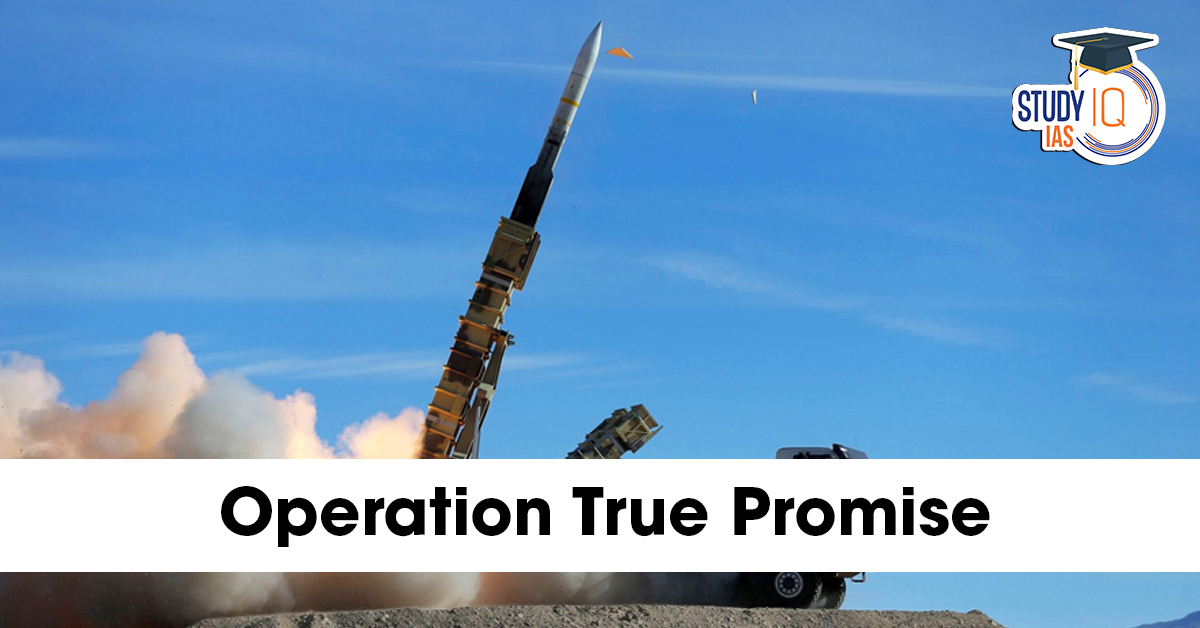Table of Contents
In the latest and most severe escalation of the Israel-Iran conflict, Iran launched Operation True Promise 3—a massive retaliatory missile and drone strike on Israeli territory. The operation came as a direct response to Israel’s Operation Rising Lion, a coordinated aerial assault on key Iranian military and nuclear installations that killed several high-ranking commanders of the Islamic Revolutionary Guard Corps (IRGC).
The developments signal a near state of war between two of the most bitter enemies in the Middle East, with potential to drag in global powers like the United States, Russia, and China, and reshape regional geopolitics.
Latest Updates on Operation True Promise 3
- As of Monday, June 16, 2025, the situation remains highly volatile with continued exchanges of strikes between Israel and Iran.
- Iran fired a new wave of missiles at several Israeli cities in Operation True Promise 3, as a direct retaliatory measure to Israel’s continuing Operation Rising Lion against Iranian forces
- Israel has reciprocated with a heightened series of air strikes on Iran, indicating an ominous escalation of hostilities throughout the region
- It is a dramatic increase in hostilities between Israel and Iran, as Iran moved from threats to actual military action.
What Led to Operation True Promise?
The seeds of Operation True Promise were sown in early 2025 when Israel intensified its campaign to prevent Iran from developing nuclear weapons. A series of covert operations and targeted assassinations of Iranian scientists culminated in the launch of Operation Rising Lion, which:
-
Targeted multiple Iranian nuclear research centers and missile storage depots.
-
Killed IRGC commander Hossein Salami and Armed Forces Chief Mohammad Bagheri.
-
Resulted in over 300 civilian injuries and the deaths of 78 people, as confirmed by Iran’s UN mission.
Iran’s Supreme Leader, Ayatollah Ali Khamenei, vowed “severe retribution”, setting the stage for a powerful counteroffensive.
Key Highlights of Operation True Promise
| Feature | Details |
|---|---|
| Launched by | Islamic Republic of Iran (IRGC) |
| Target | Israel, particularly Tel Aviv, Jerusalem & IDF bases |
| First Wave | April 2025 (Operation True Promise 1) |
| Current Phase | June 2025 (Operation True Promise 3) |
| Weaponry Used | Ballistic missiles, drones, precision rockets |
| Casualties (as of June 14) | 40 injured, 1 civilian killed in Israel |
| Motive | Retaliation for Israeli attack on the Iranian top brass |
| IRGC Codename | “Ya Ali ibn Abi Talib” (Religious significance) |
Also Check: Israel-Iran conflict
Timeline of Operation True Promise
Operation True Promise 1 & 2 (April–May 2025)
Following Israel’s assassination of an Iranian nuclear scientist and targeted drone strikes on IRGC camps, Iran launched initial waves of missile attacks toward Israeli military installations. These were largely intercepted by the Iron Dome.
Operation True Promise 3 (June 2025)
The most severe escalation came after Israel killed IRGC chief Hossein Salami and Armed Forces Head Mohammad Bagheri in a targeted strike on Tehran.
In response:
-
Hundreds of ballistic missiles were launched at Israeli cities.
-
Explosions were reported in Tel Aviv, Jerusalem, and Ramat Gan.
-
Iran declared it delivered a “crushing and precise response” to the “Zionist regime.”
Phases of the Operation
Operation True Promise has unfolded in three waves so far:
| Phase | Date | Description |
|---|---|---|
| 1 | April 2025 | Iran launched drones and missiles into Golan Heights. |
| 2 | May 2025 | Attacks expanded to Israeli airbases and US facilities. |
| 3 | June 14, 2025 | Full-scale missile barrage on Tel Aviv and Jerusalem. |
Objectives of Operation True Promise
-
Military Retaliation: To avenge the deaths of high-ranking Iranian officials and scientists.
-
Strategic Deterrence: Demonstrate Iran’s missile capabilities and deter future Israeli strikes.
-
Public Morale: Reinforce unity within Iran through religious symbolism and nationalist rhetoric.
-
Regional Messaging: Signal to allies like Hezbollah and enemies like Saudi Arabia about Iran’s readiness for war.
Military Technologies Involved
Iranian Capabilities
-
Ballistic Missiles: Medium-range missiles with precision strike capability, launched from land and possibly sea platforms.
-
Drones and UAVs: Likely deployed for reconnaissance and strike missions.
-
Electronic Warfare: Attempts to disrupt Israeli radar and communications during missile salvos.
Israeli Defenses
-
Iron Dome: Intercepts short to medium-range rockets effectively, but saturation attacks challenge its limits.
-
David’s Sling: Targets medium to long-range threats, likely used for some Iranian missile intercepts.
-
Air Force: Ready for counterstrikes and suppression of missile launch sites if necessary.
Geopolitical Context and Implications
1. Regional Stability at Stake
The conflict risks destabilizing the wider Middle East, involving proxy actors such as:
-
Hezbollah in Lebanon
-
Palestinian militant groups in Gaza
-
Syrian regime forces aligned with Iran
2. Global Energy Markets
Strikes increase the risk of closure or disruption of the Strait of Hormuz, through which 20% of global oil passes, potentially spiking international oil prices and triggering economic shocks worldwide.
3. Diplomatic Fallout
-
The United States reaffirms support for Israel while pressing Iran to return to nuclear talks.
-
United Nations urges de-escalation; calls for ceasefire remain unheeded.
-
European Union, Russia, and China stress diplomacy but remain cautious in condemning either party explicitly.
Human Cost and Civilian Impact
Beyond the strategic and military dimensions, the conflict has inflicted:
-
Casualties and injuries to civilians caught in missile attacks or debris from interceptors.
-
Psychological trauma for millions living under constant threat of air raids.
-
Disruptions to daily life: Schools closed, transport halted, economic activity slowed.
The Israeli government has mobilized emergency services and launched public safety campaigns to mitigate civilian harm.
Statements from Key Leaders
-
Iran’s Supreme Leader, Ayatollah Ali Khamenei:
“Those who kill our children and commanders will be severely punished. Our response will be both divine and precise.” -
Israeli Prime Minister Benjamin Netanyahu:
“Israel stands united against an evil regime that seeks our destruction. Our military operations are historic and decisive.” -
US President Donald Trump:
“Iran has missed its chance for peace. Israel has our full support in defending itself.” -
UN Secretary-General António Guterres:
“I call on both sides to immediately cease hostilities. Peace and dialogue must prevail to prevent further bloodshed.”
What Lies Ahead?
The situation remains highly volatile:
-
Potential for full-scale war: Both sides are escalating military readiness.
-
International mediation efforts: Behind-the-scenes diplomacy intensifies.
-
Nuclear brinkmanship: Iran’s nuclear program progress and Israel’s preventive strategies heighten global anxiety.


 World Summit on Disaster Management (WSD...
World Summit on Disaster Management (WSD...
 Domestic Systemically Important Banks (D...
Domestic Systemically Important Banks (D...
 The Missing Link in India’s Critical M...
The Missing Link in India’s Critical M...

























